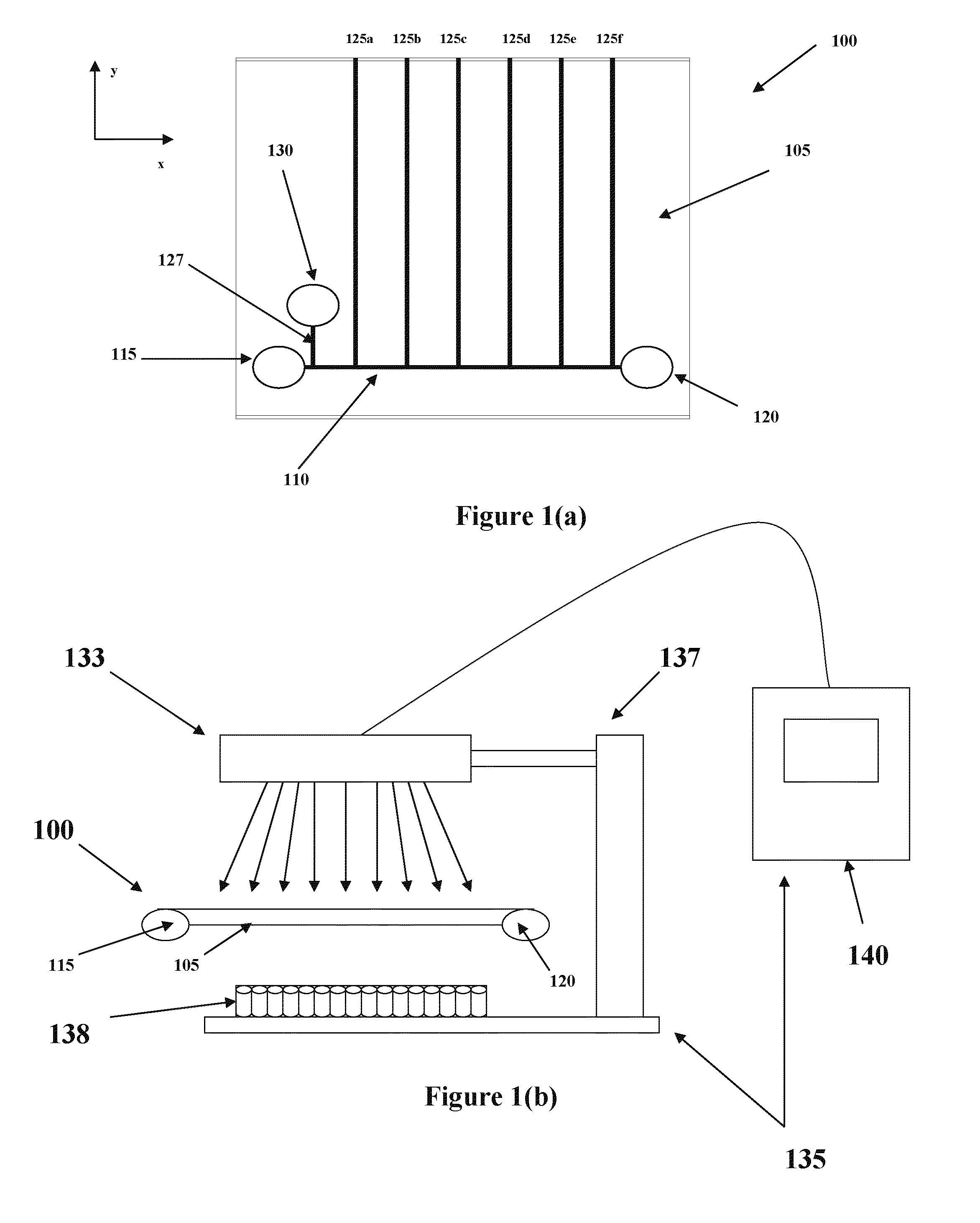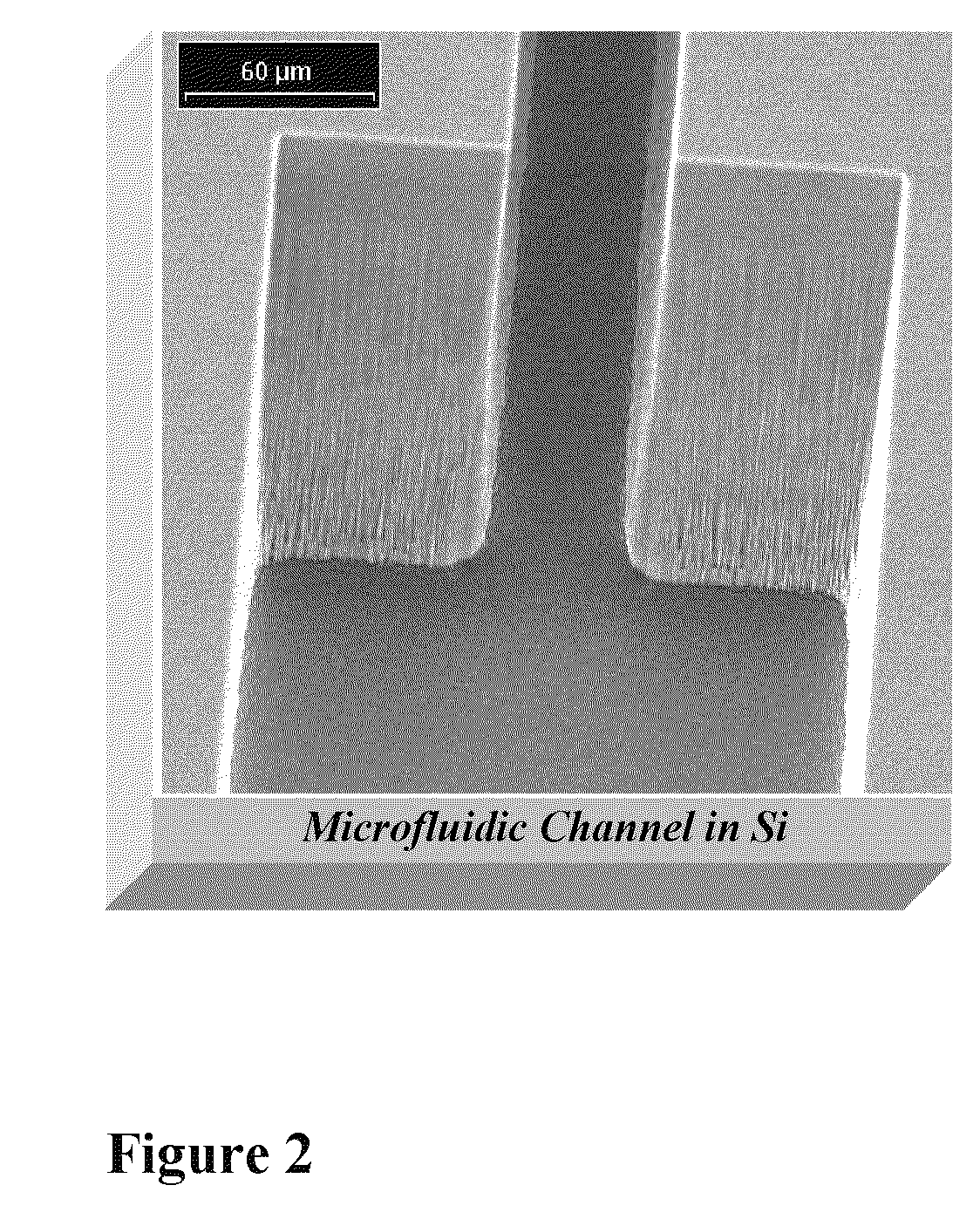System and Method For the Separation of Analytes
an analyte and protein technology, applied in the field of proteomics and protein detection, can solve the problems of inefficiency, unreliability, and high cost of available systems and methods for analyte separation and protein detection, and achieve the effect of facilitating sample separation
- Summary
- Abstract
- Description
- Claims
- Application Information
AI Technical Summary
Benefits of technology
Problems solved by technology
Method used
Image
Examples
Embodiment Construction
[0027]In a preferred embodiment of the present invention, CIEF and CE are combined on a semiconductor, e.g., silicon, chip forming a two-dimensional separations module 100 for facilitating two types of analyte separation and subsequent protein detection. Throughout the specification, the word protein will be used to refer to the protein molecule itself and / or one or more of its basic components, i.e., peptides, polypeptides, oligopeptides, amino acids and the like, except where specific reference is made to the individual components. As shown in FIG. 1(a), a chip 105 includes a first microchannel or microcapillary (hereafter “microchannel”) 110 extending in the X direction, having reservoirs 115, 120 at opposite ends thereof. Intersecting with the first microchannel 110 are a plurality of second microchannels, 125a-f extending in the Y direction, perpendicular to the first microchannel 110. Additionally, there is a third microchannel 127 also extending in the Y-direction for supplyi...
PUM
| Property | Measurement | Unit |
|---|---|---|
| volumes | aaaaa | aaaaa |
| width | aaaaa | aaaaa |
| voltage | aaaaa | aaaaa |
Abstract
Description
Claims
Application Information
 Login to View More
Login to View More - R&D
- Intellectual Property
- Life Sciences
- Materials
- Tech Scout
- Unparalleled Data Quality
- Higher Quality Content
- 60% Fewer Hallucinations
Browse by: Latest US Patents, China's latest patents, Technical Efficacy Thesaurus, Application Domain, Technology Topic, Popular Technical Reports.
© 2025 PatSnap. All rights reserved.Legal|Privacy policy|Modern Slavery Act Transparency Statement|Sitemap|About US| Contact US: help@patsnap.com



